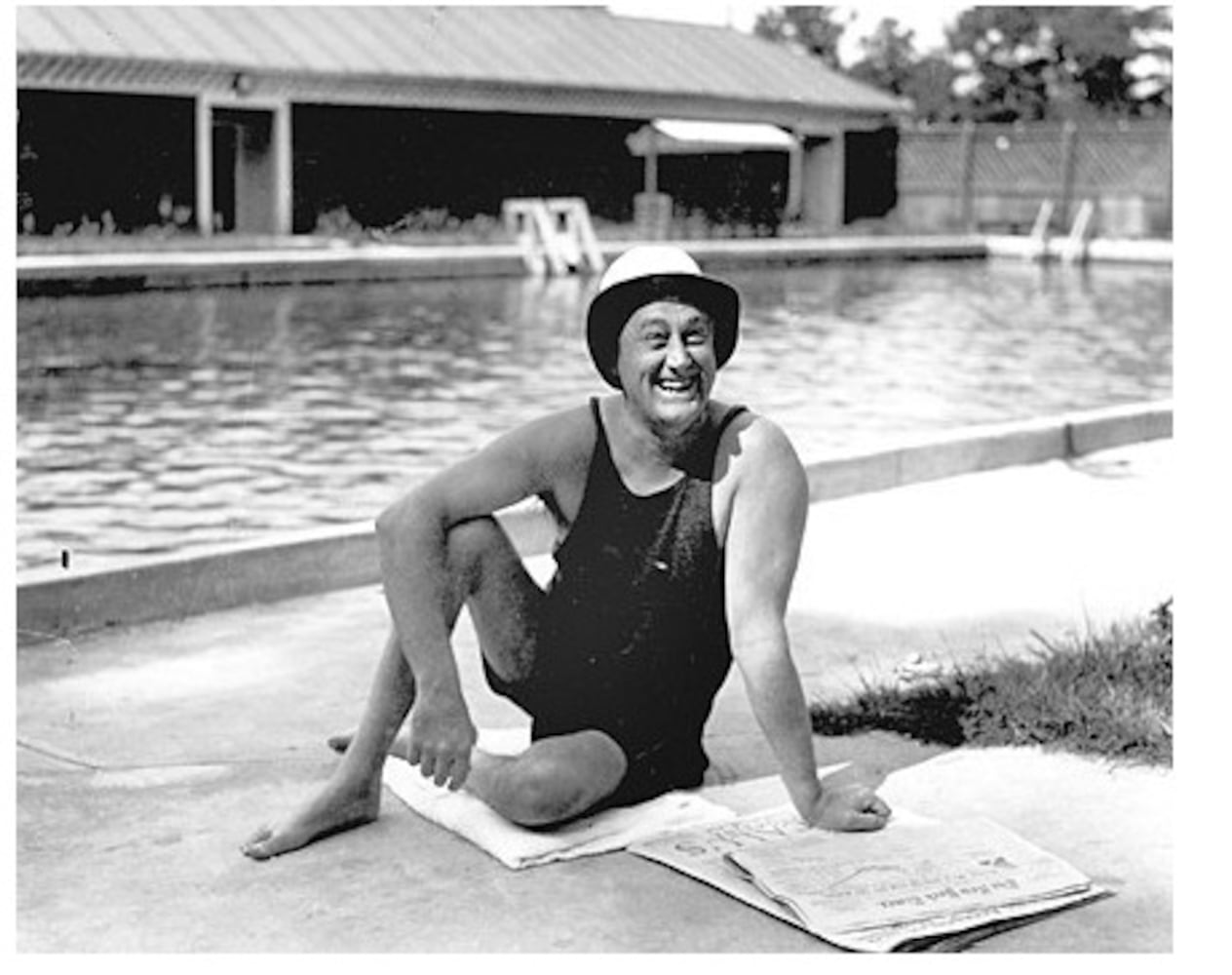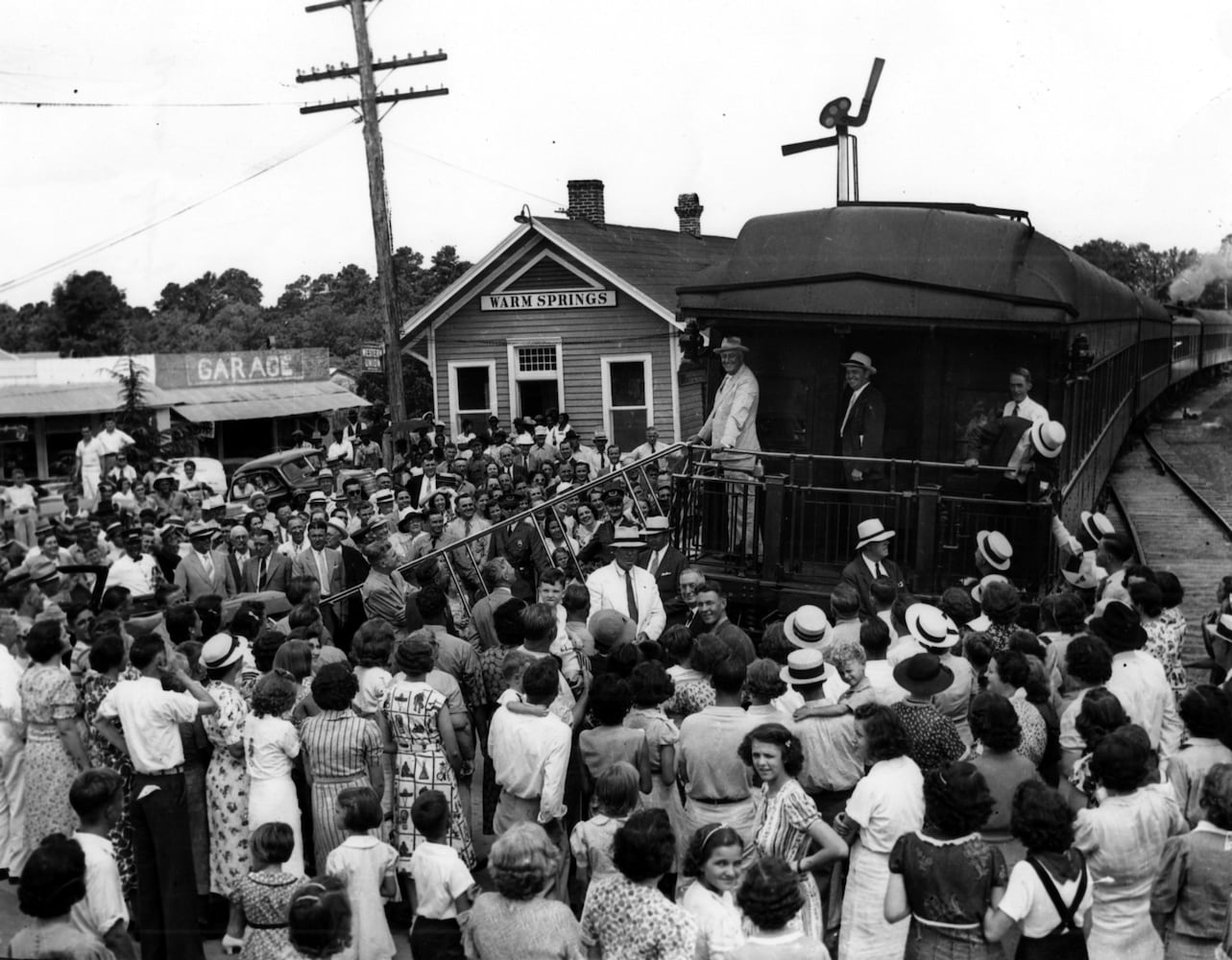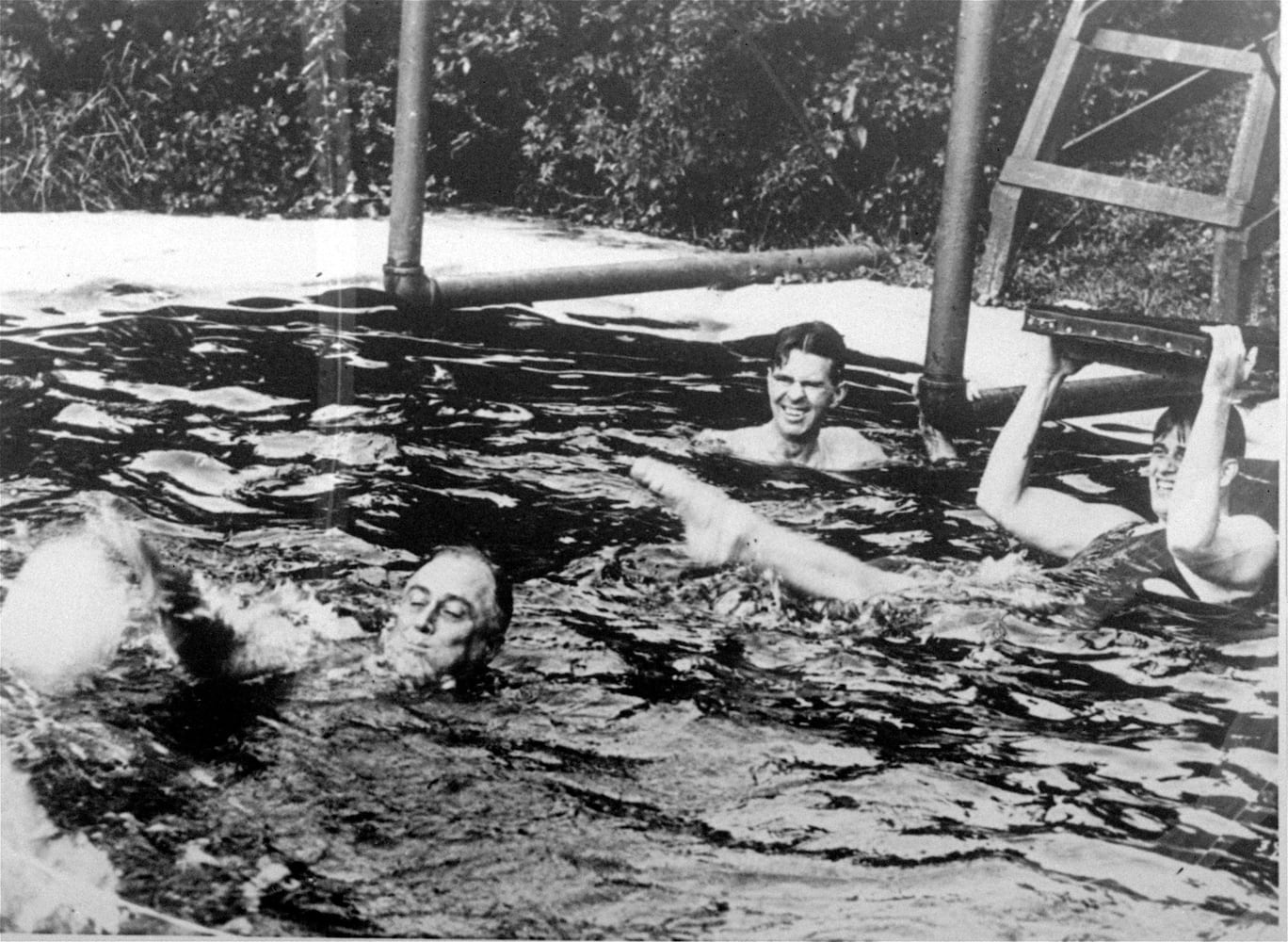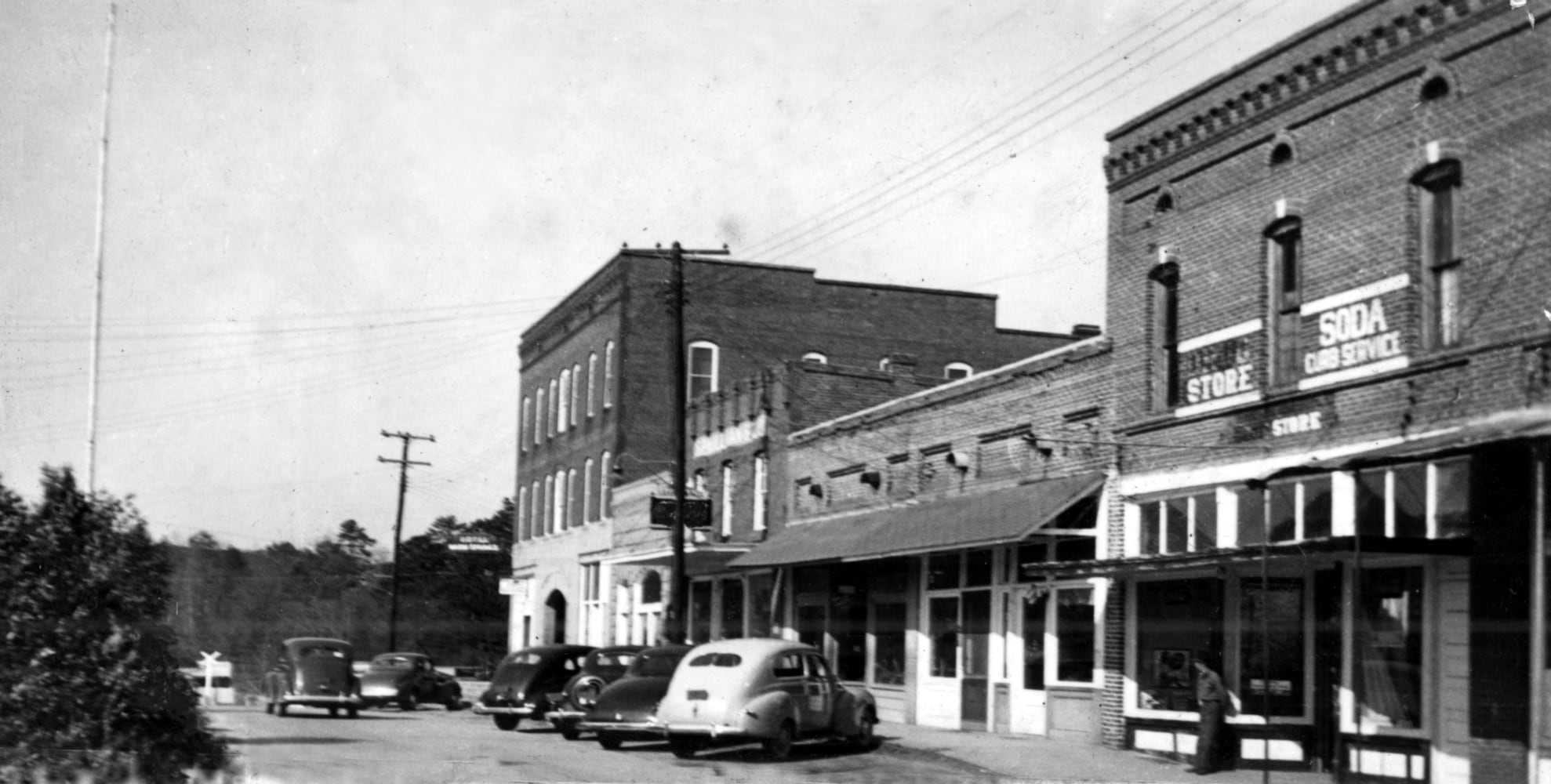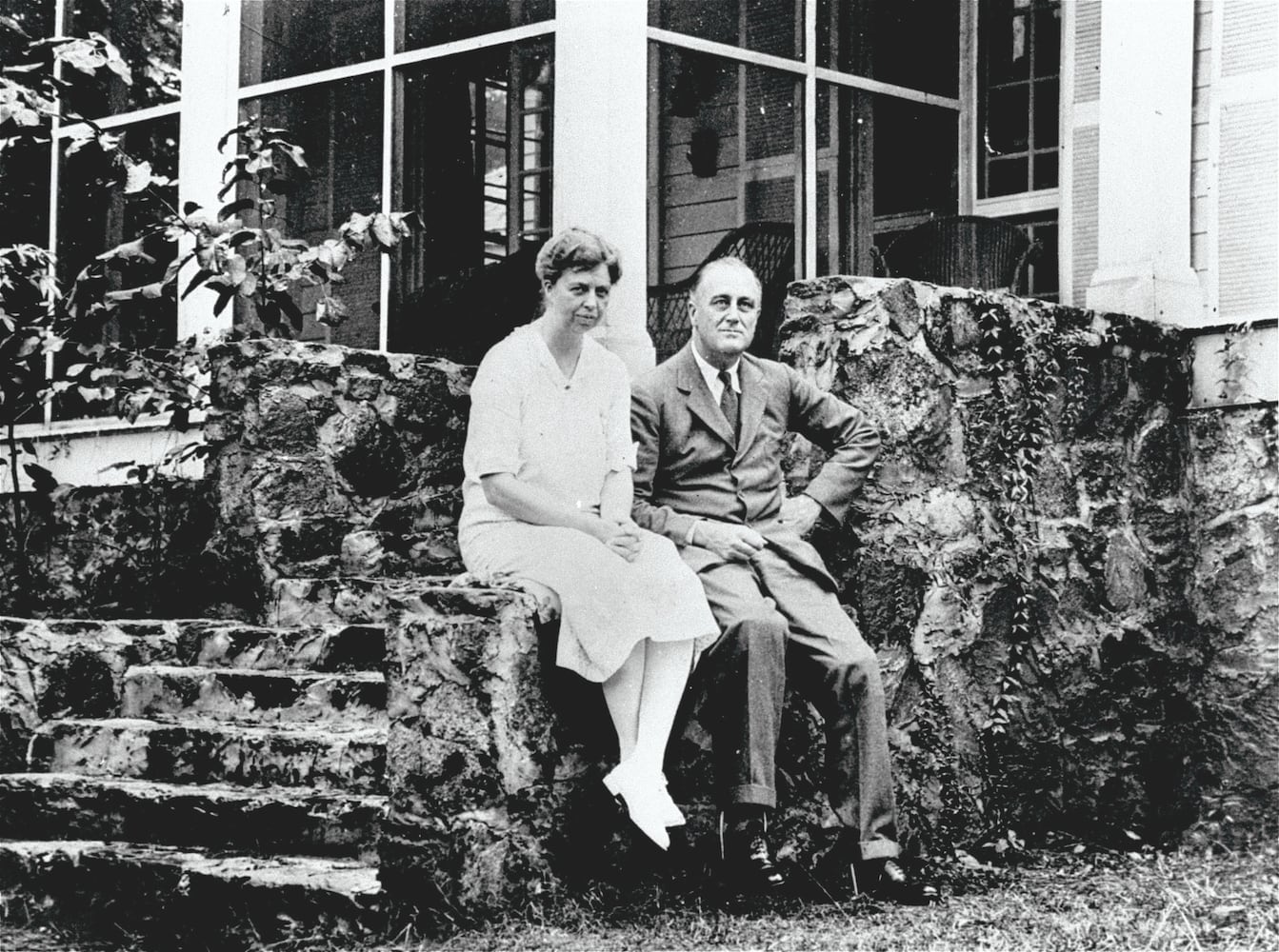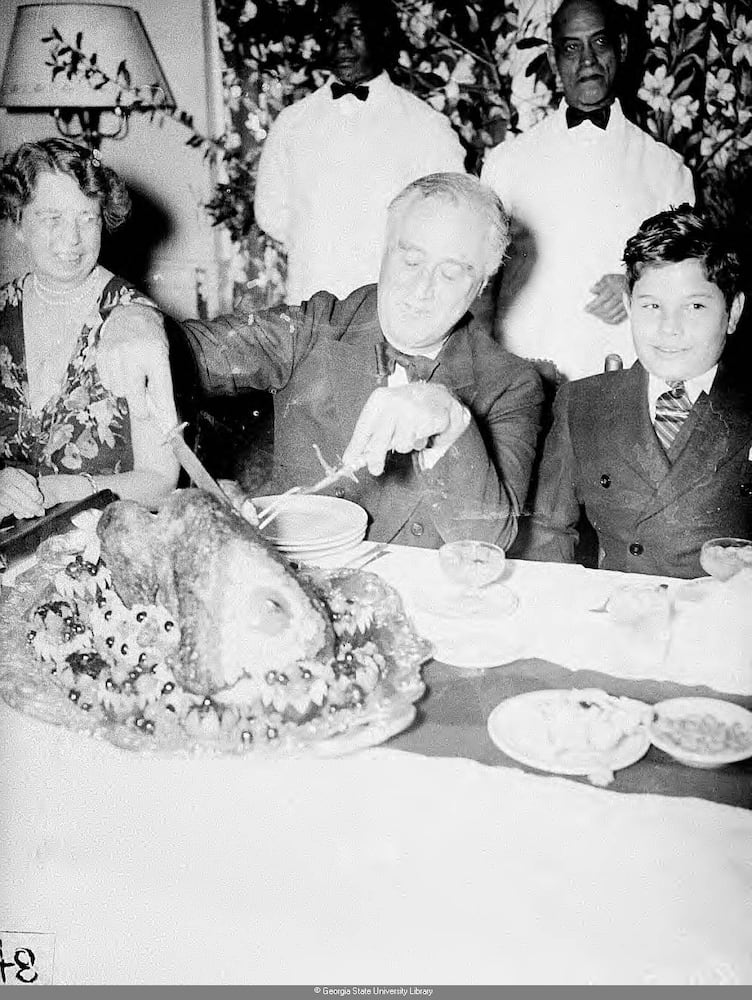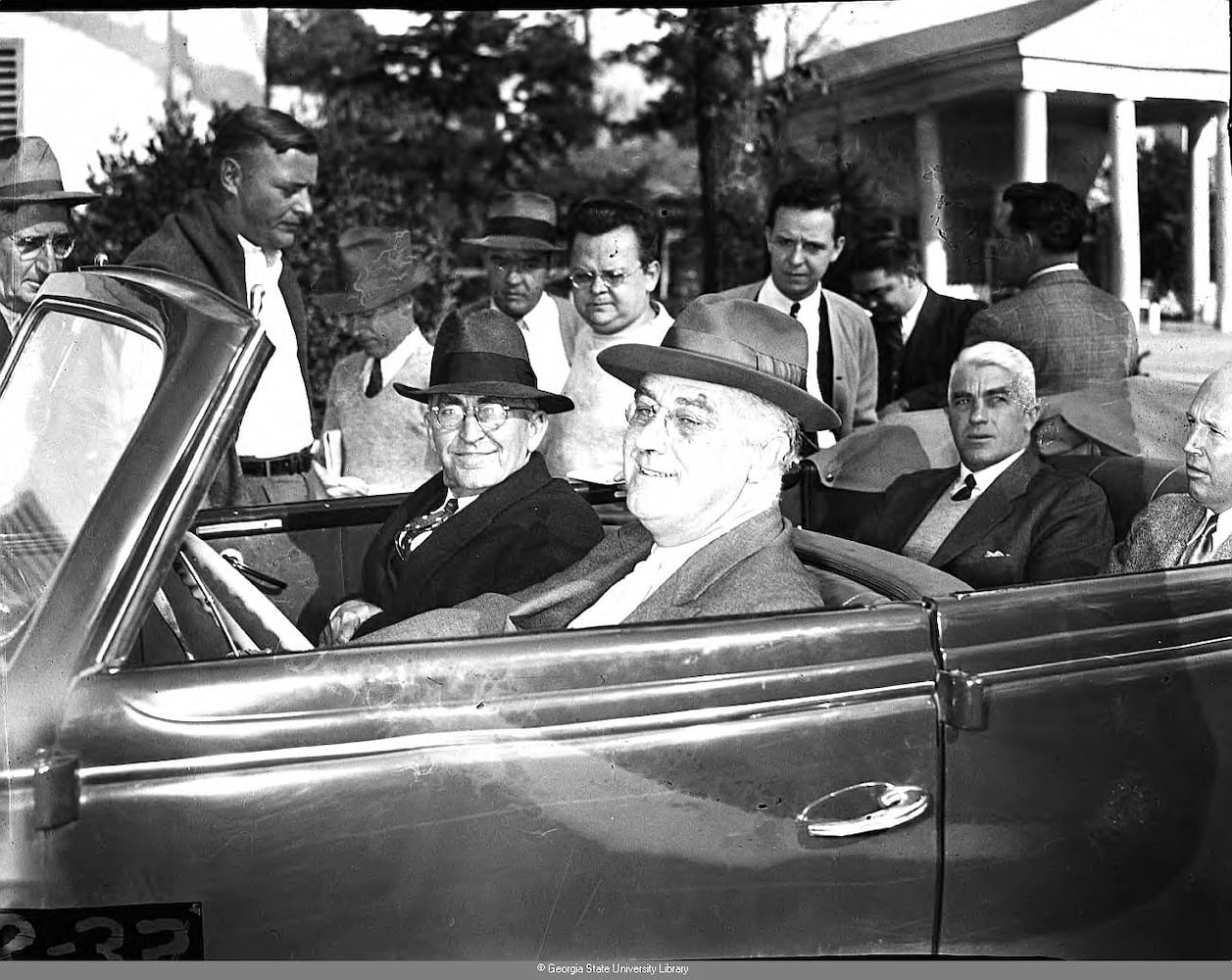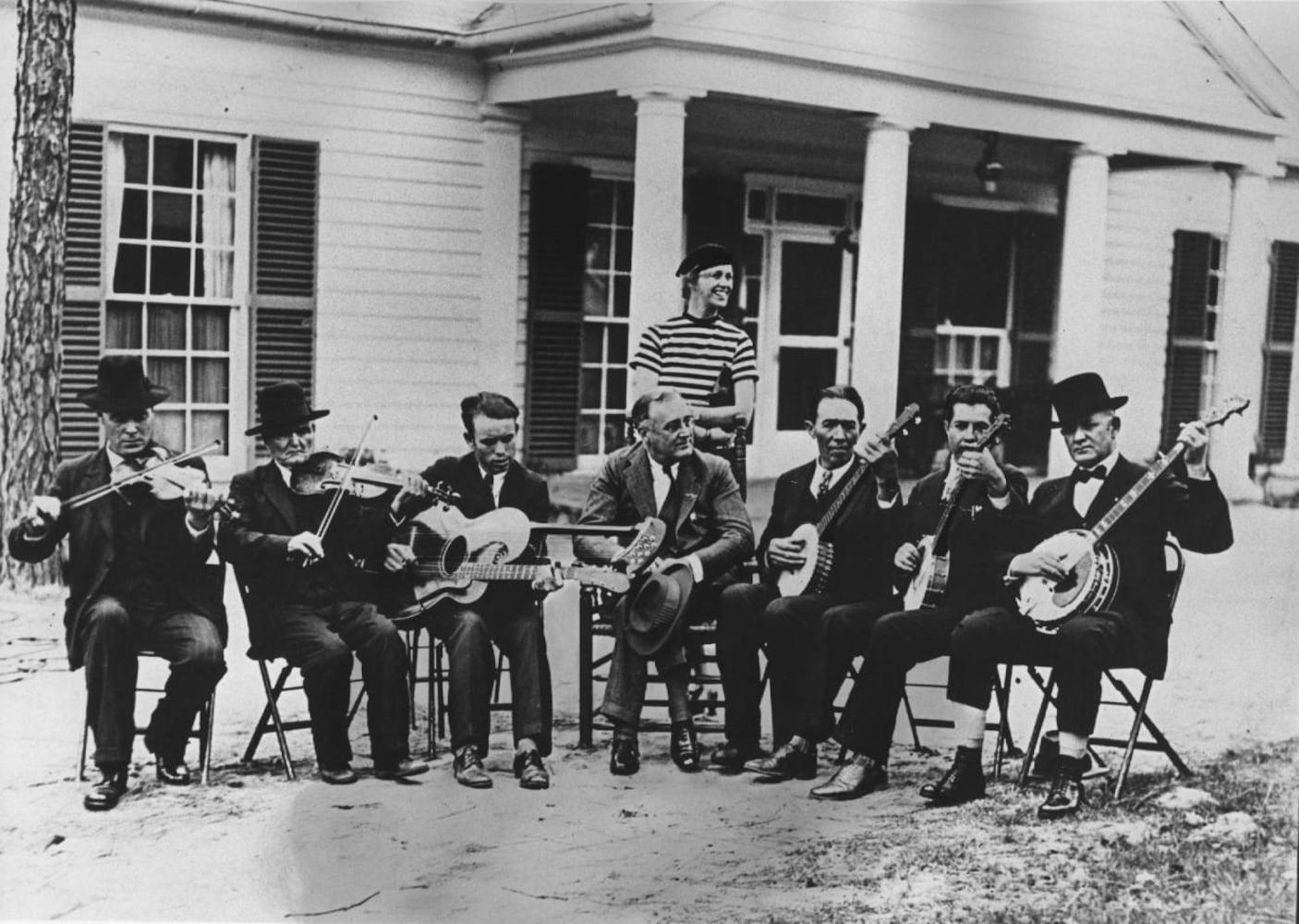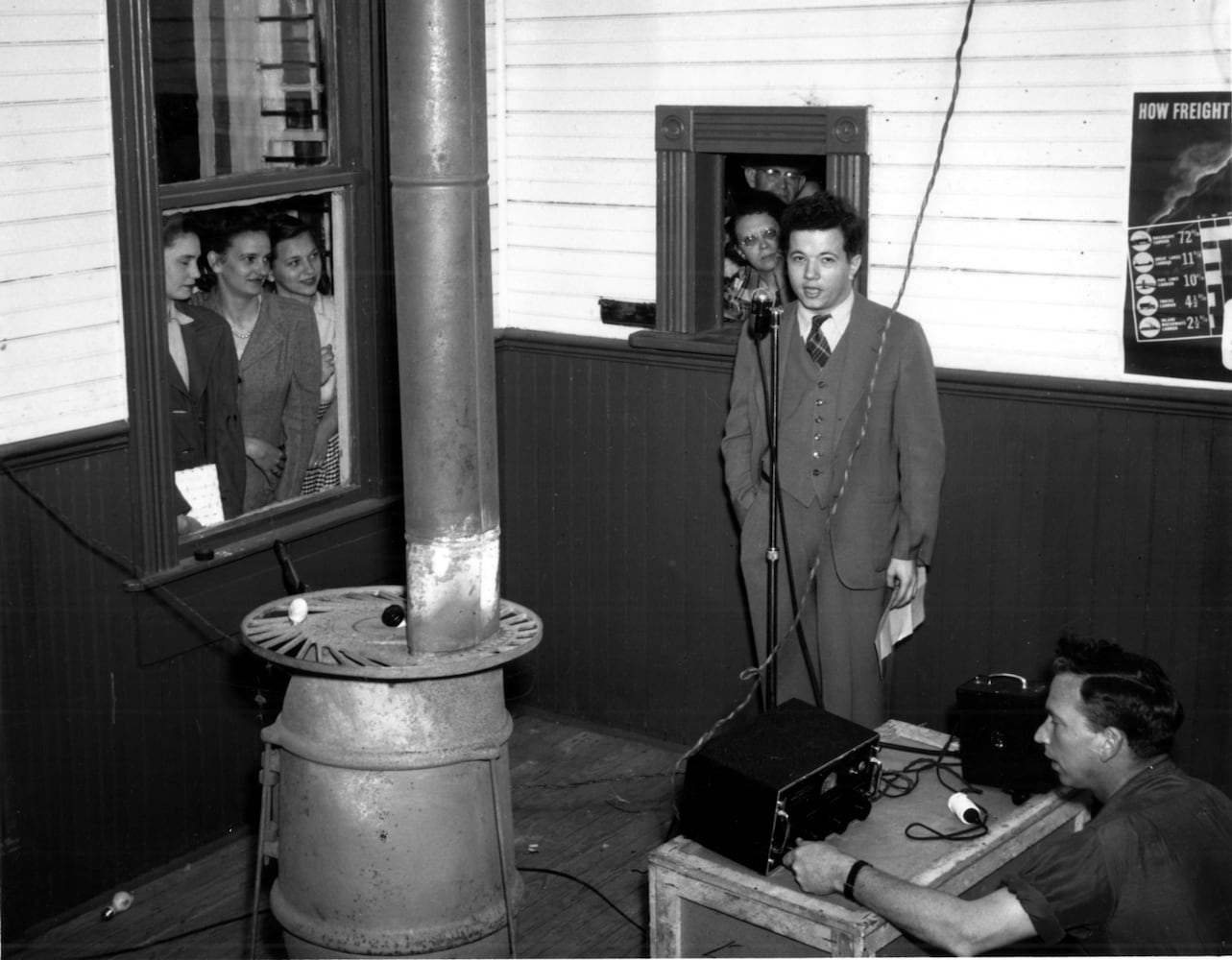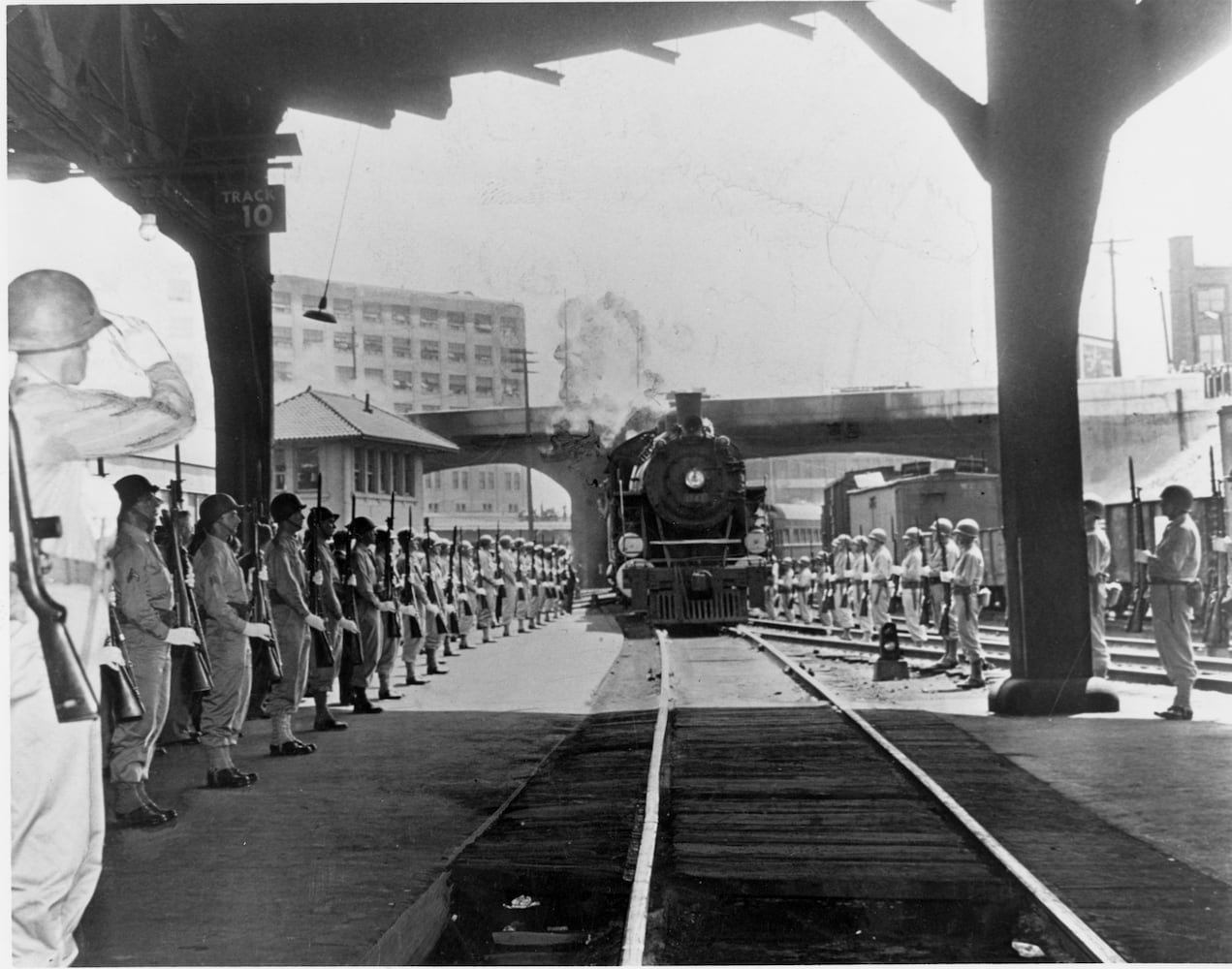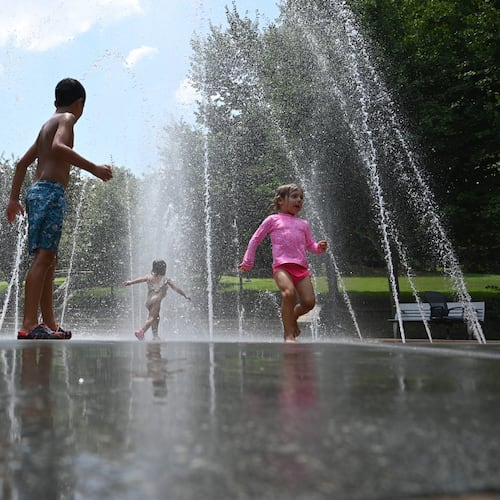The rigors of being “the most powerful person in the free world” can make the downtime that much more precious. Throughout history U.S. presidents have had favorite retreats: Jefferson’s Monticello, George Bush’s ranch in Crawford, Texas; Kennedy’s family compound on Cape Cod.
For Franklin Delano Roosevelt, it was The Little White House in Warm Springs, Ga.
Roosevelt, who had run unsuccessfully for vice president in 1920, was vacationing with his family in Canada in 1921 when he was stricken with polio. Left paralyzed from the waist down, he began traveling to Warm Springs in 1924 after he heard about a polio patient who had benefited from swimming in the hot springs.
Credit: AJC file
Credit: AJC file
He liked the place so much he kept coming back, not only for therapy but also to escape the stress of Washington after he was elected president. In 1927, Roosevelt bought the 2,000-acre resort and turned it into a treatment center for himself and other polio victims.
Relaxation came easy in Warm Springs, and FDR relished the scenery of the surrounding area, where the rolling upper coastal plains bump up against Pine Mountain. To this day, residents recount stories of children swimming with Roosevelt in the therapeutic waters and of his down-home demeanor.
Just as presidents now use Camp David in the Maryland mountains as a retreat, Roosevelt frequented Warm Springs, visiting more than 40 times.
He was in Warm Springs just before the Japanese attack on Pearl Harbor in December 1941, and cut his visit short to return to Washington to meet with the Japanese ambassador. He also came there after conferences with British Prime Minister Winston Churchill and Soviet dictator Josef Stalin that helped set the map of postwar Europe. And he made a tradition of celebrating Thanksgiving there.
Credit: KENNETH ROGERS / AJC FILE
Credit: KENNETH ROGERS / AJC FILE
Roosevelt once said the idea for the Rural Electrification Administration, which spread cheap electricity throughout the country, was inspired by the high bills he received for the Warm Springs compound.
The era came to an end on April 12, 1945, when Roosevelt, while sitting for a portrait at the Little White House early in his fourth term, complained of an ache in the back of his head around 1 p.m. At 1:15 he fainted, and he never regained consciousness. He died at 3:35 p.m. from a massive cerebral hemorrhage. As his funeral train rolled north to Hyde Park via Atlanta, his casket lay on a bier made of wood from pines grown at Warm Springs.
The small-town charms that brought FDR to Warm Springs still exist, and one weekend each year visitors can swim in the same warm spring-fed pools that once served as an oasis for one of the most influential figures in modern history.
Credit: AJC File
Credit: AJC File
About the Author
The Latest
Featured
